With Dr Carla van Laar MCAT DThAP
Feature image credit Carla van Laar
In this article I share some of the research into creative spaces, and invite you to make a creative space for yourself, a space to continue your journey of creative self care.
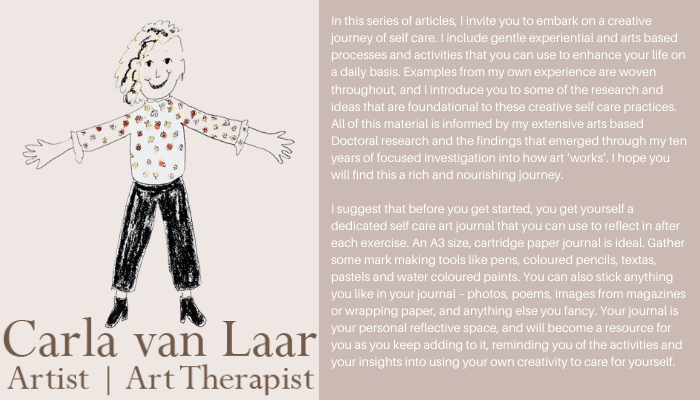
Creative Spaces
Creating safe and artful environments can be part of transformative processes, and contexts can be considered an active partner in the “therapeutic bricolage” (Swan, 2010, p.220). This perspective includes understandings of the mutual influences that art works and contexts have on each other, and the intersubjective experiencing that occurs between people, artworks and their environments.
As an early champion of art therapy in English hospitals, Hill (1945) agreed with Florence Nightingale’s assertion that the presence of artworks in hospital settings has a positive influence on healing (Hill, 1945).
Philosophers de Botton and Armstrong (2013) share this view, however they also emphasise and problematize institutional practices of the art industry and how viewers are conditioned to engage with art:
[This conditioning] lies in the way that art is taught, sold and presented by the art establishment. Since the beginning of the twentieth century, our relationship with art has been weakened by a profound institutional reluctance to address the questions of what art is for (de Botton & Armstrong, 2013, p. 4).
They suggest that when we engage in therapeutic seeing, art can assist us with tasks such as remembering, hope, sorrow, rebalancing, self-understanding, growth and appreciation (de Botton & Armstrong, 2013). They muse that therapeutic seeing might be assisted by art institutions if, rather than grouping artworks by periods of history or geography, galleries were curated by themes of human experience, such as “Tenderness” (de Botton & Armstrong, 2013, p. 94). These ideas can be adapted for how we see art in other, less formal contexts.
(van Laar 2020)
The Process
In the last two sessions we practiced tuning in to our surroundings and noticing colours and their effects on us, followed by noticing what nurtures us and spending some time mindfully making art from observation.
Now that you are becoming more aware of how your environment affects your sense of wellbeing, you are invited to make yourself a creative space that you design yourself to make yourself comfortable, safe and where you can be creative.
You might like to start by selecting a space. This can be a small room or nook in a room in your home, or a space outdoors on your balcony, in your garden, or somewhere you like to visit.

Next, you can clear the space of any unwanted clutter and remove any advertising material that might interfere with your attention, self-esteem and ability to remain present and focused in the here and now.
Make a comfortable place to sit or stand. Notice the placement of your furnishings and the direction you are facing. Notice also what is at your back and your sides. Do you like to see out of a window? Do you like to have space behind you or a wall?

Pay attention to the objects you have in your creative space. Do they bring you pleasure, comfort or inspiration? Do they hold special meaning for you? Choose objects to have in your space that remind you of your creativity and things that are important to you. Choose textures and colours that you are attracted to, that you enjoy touching and seeing. You might like to select something from each of the elements of earth, air, water and fire to help you feel connected to the elements and creative life energy of the universe.
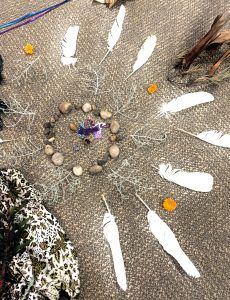
You might like to have some books and artworks in your creative space that are created by people you love or admire. These will remind you of your allies in creativity.
Finally, consider if you would like to make yourself some words, phrases or quotes on postcards to place around your space. “Let it flow”, “I am enough” or “Breathe” are a few examples. What ever feels right and creative for you in the here and now will be simply perfect. Write your words or phrases on postcard sized paper or card and spend some time decorating these with patterns, colours, collected natural objects like leaves or flowers, or use pictures cut from magazines to create collages around your chosen words.
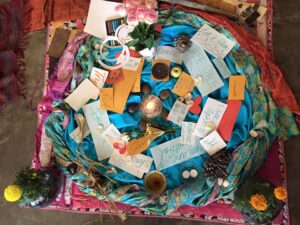
Surround yourself with these affirming post cards in your creative space. Spend some time just being in your space, looking around, touching things and enjoying this special place you have created to nurture yourself.
Questions for Reflective Journalling
How did you choose your space?
What important decisions did you make during the process of setting up your space?
What did you learn about things that nurture and support your creativity?
Can you describe what it is like to be in this space?
Maybe you would like to write the story of creating it from a third person perspective, as though you are the space itself witnessing you entering and the process of making the place special and your own.
…
References
van Laar, C. Seeing Her Stories. Carlavanlaar.com, Brunswick, Australia.
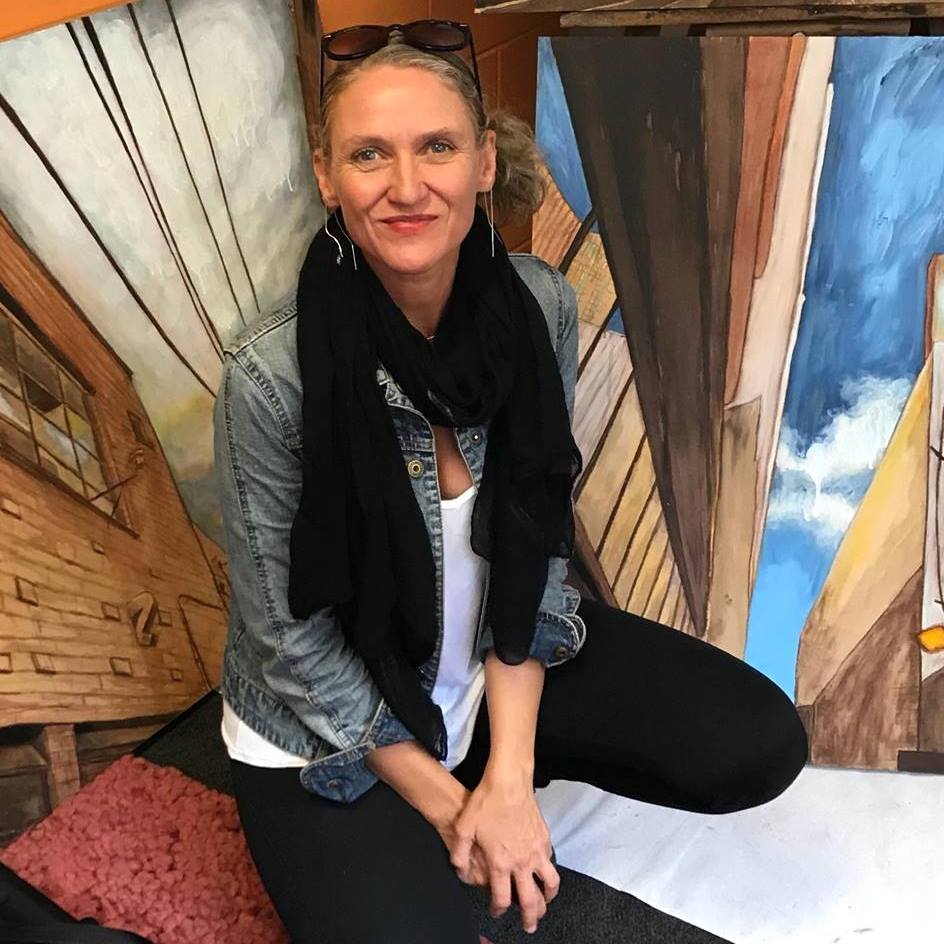
Dr Carla van Laar
Artist | Art Therapist
Master of Creative Arts Therapy
Doctor of Therapeutic Arts Practice
Accredited Supervisor and Clinical Registrant PACFA
Carla van Laar is a painter and therapeutic arts practitioner from Australia. Born in Brisbane, Carla is first generation Australian on her Dutch grandparents side, and 7th generation through her maternal bloodline who were mostly English and came to Australia in the early colonisation of the 1800s. Carla currently lives and works in Victoria, residing between Wurrundjeri country in Melbourne, and Boon Wurrung country in Inverloch, paying deep respects to the First Peoples of the Kulin Nations whose land was never ceded and will always be Aboriginal land. Identifying as a cisgender woman, Carla is passionately disinterested in socially constructed identities that disempower anyone. Carla has over 25 years’ experience working with people and the arts for health and well-being in community organisations, justice, health and education contexts.
Carla’s first book “Bereaved Mother’s Heart” was published in 2007 and broke social taboos about maternal grief. From 2008-18 she established and ran an independent art therapy studio and gallery in Melbourne. Her Doctoral research “Seeing Her Stories” continues the mission to make women’s stories visible, through art.
Carla has lectured and supervised Art Therapy students at RMIT, MIECAT and currently the IKON Institute. She is a practicing artist and in 2018 received an Artist Fellowship at RMIT’s creative research lab, “Creative Agency”. She insists on being part of a creative revolution in which art re-embodies lived experience, brings us to our senses, makes us aware of the interconnectedness of all life and is an agent of social change.
Carla’s new book “Seeing her stories” presents her research into making unseen stories visible through art, and is available to read for free online here or purchase a hard copy of the full colour hard cover coffee table book here.
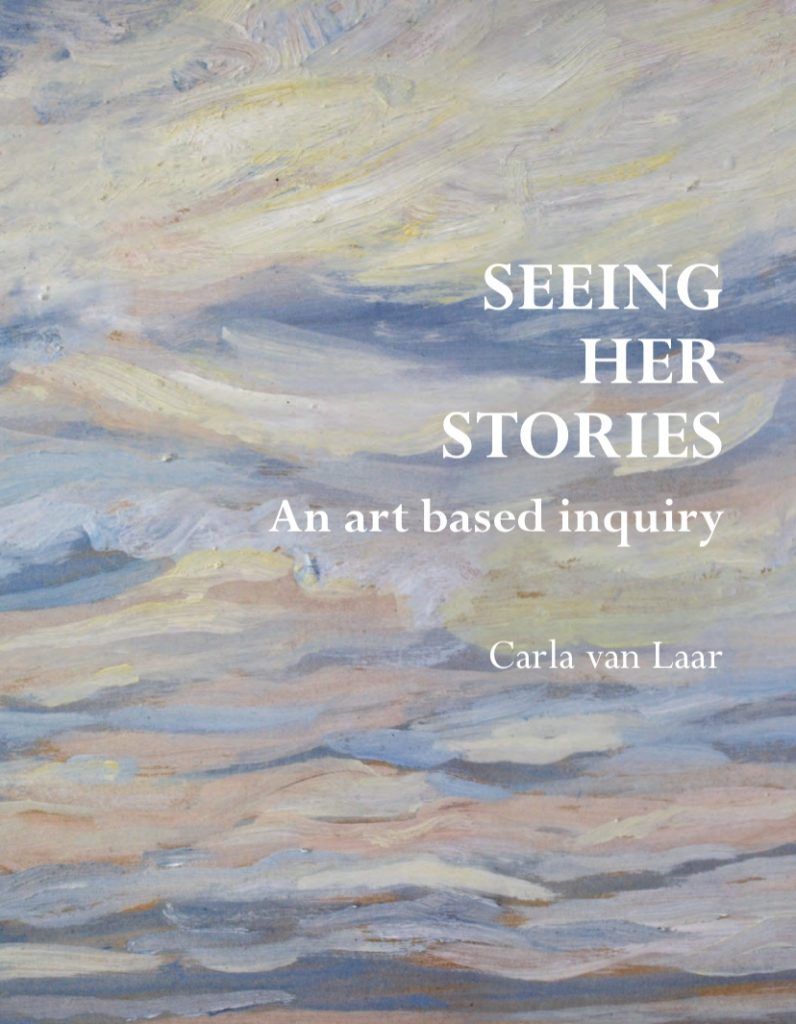

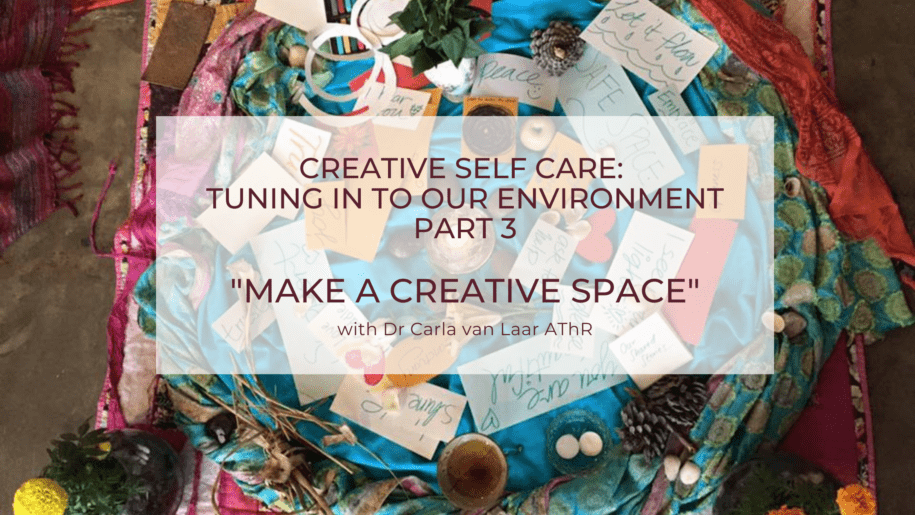
Leave a Reply